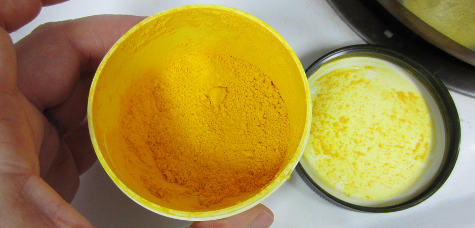Hundreds of pounds of toxic PCBs, banned in the ’70s, taint Chicago’s air each year; sources include paints still sold on the market
October 21, 2015
By: Brian Bienkowski
Environmental Health News
More than 400 pounds of toxic PCBs are emitted to Chicago’s air each year and researchers warn that some of this load comes via a chemical reaction in paint still sold in hardware stores.
 New research designed to inventory the chemicals in Chicago finds soils, sewage sludge and paint are major sources and current cleanup strategies may not be the most effective for protecting people’s health.
New research designed to inventory the chemicals in Chicago finds soils, sewage sludge and paint are major sources and current cleanup strategies may not be the most effective for protecting people’s health.
The chemicals were once widely used as electrical insulators and industrial lubricants but were banned in the late 1970s when researchers found them building up in people and linked them to health effects such as cancer, heart problems and impacts to brain development.
PCBs, short for polychlorinated biphenyls, now seem to be a byproduct of certain pigment production. In recent years researchers have found that some paints, clothing, newspapers and magazines contain forms of the chemicals, usually a specific compound called PCB-11.
“Architectural paint that we buy at hardware stores contributes to a significant amount of PCBs people are exposed to every day. That’s just crazy,” said Keri Hornbuckle, a professor at the University of Iowa’s department of civil and environmental engineering, who previously found more than 50 PCB compounds in 33 commercial paint pigments purchased from U.S. stores.
PCBs build up in the fat tissues of fish and some animals and eating such foods has long been considered the major exposure route for humans. But there is increasing evidence that inhaling airborne PCBs also plays a role in people’s toxic load and such exposures—small as they are—can result in disease.
“PCBs are dangerous chemicals … even low concentrations of PCBs in air constitute an important route of exposure and disease, especially if the exposure is prolonged,” wrote Dr. David Carpenter, director of the Institute for Health and the Environment at the University at Albany-SUNY, in a report this year on airborne PCBs.
In the first comprehensive inventory of PCBs for a city, Hornbuckle and colleagues examined where the chemicals are and where airborne emissions come from in Chicago.
Paints—both on the exterior and interior of buildings—were just a sliver of the city’s PCBs load, but contributed 7 percent of total emissions.
They calculated paint emissions by looking at the annual volume of paint sold in the city estimated to have PCB-containing pigments, and past studies of how the chemicals are emitted from paint.
Some of the larger emissions sources were drying sewage sludge and contaminated soils.
City soils—which accounted for 31 percent of emissions—did not include Superfund sites or other areas know to be contaminated, said co-author Scott Spak, an assistant professor of urban and regional planning and engineering at the University of Iowa.
“These are soils across the city—parks, backyards, highway medians,” Spak said.
 “This makes cleaning up urban soils across cities one of the harder sources to mitigate,” he said.
“This makes cleaning up urban soils across cities one of the harder sources to mitigate,” he said.
While all PCBs can escape from soils, PCB-11 is one of the most volatile forms of the chemical, the authors warn, saying it may be emitted to air within hours to days of applying the paint.
Sixty percent of 85 women from East Chicago, Indiana, and Columbus Junction, Iowa, had traces of PCB-11 in their blood, according to a 2013 study from Hornbuckle and colleagues.
Steve Sides—vice president of the American Coatings Association, which represents paint manufacturers—said in an email that they are aware of studies finding low levels of contaminants in paint materials but had “nothing to add” in regards to the Chicago study.
PCBs as a byproduct of pigment manufacturing remain exempt from the Toxic Control Substances Act, the federal law regulating chemicals because the amounts aren’t large enough to be significant.
The U.S. Environmental Protection Agency, which enforces chemical regulation, has requested that federal scientists from the National Toxicology Program investigate PCB-11’s potential to harm people, said EPA spokeswoman Cathy Milbourn in an email.
In addition, there are limits on the concentrations of such “inadvertently generated PCBs”, Milbourn said.
“Specifically an annual average of no more than 25 [parts per million] and a 50 [parts per million] maximum” in products manufactured or imported into the United States, she said.
Hornbuckle and Spak argue that, while the concentrations of PCBs in paint may be small, the EPA should consider that the chemicals are easily released into air.




